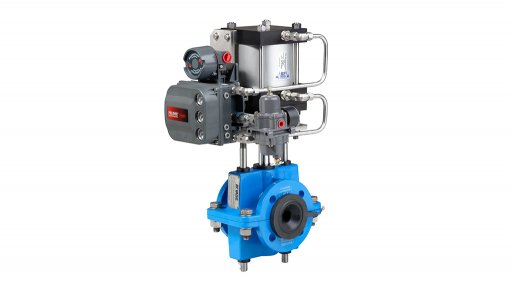
WORST CASE SCENARIO A valve that is too small or too big can even cause the pipeline to implode or explode
Valves manufacturer Dynamic Fluid Control (DFC) is supplying valves to several mine projects, mainly because technological advancements in valve and pipeline solutions offer an alternative to using trucks to transport minerals from mining sites.
Distance is no longer an issue, as there are pipelines that run 24/7 from various gold mining sites in Gauteng to the processing plant in Springs, which save time and money, says DFC COO Mlungisi Cele.
Many of DFC’s products are installed in mines, including iron-ore mines in Kathu and Postmasburg, a zinc mine in Aggeneys and a manganese ore mine in Hotazel, all in the Northern Cape; a gold mine south of the Witwatersrand ridge, in Gauteng; and various platinum mines on the Bushveld Complex eastern limb, in the North West, and the western limb, in Limpopo.
DFC also supplies products to coal mines in Mpumalanga and to diamond miners along the Limpopo river, separating the Limpopo province, Botswana and Zimbabwe, explains Cele.
“The valves that the company supplies are used on the pipelines that transport the tailings from the old mine dumps to the processing plants and then to the tailings dams. “These mining operations are serviced by our distributors such as industrial equipment supplier Invincible Valves, valves supplier Process Valves and valves and instrumentation company Ragmax,” he says.
DFC also supplies actuators for every valve that it sells. At times, the company buys actuators from other companies in South Africa while manufacturing pneumatic actuators for its in-house brand BIMAN. It also manufactures hand wheel valves that are opened and closed manually, Cele notes.
In instances where the pressure in the pipeline is too high for pneumatic actuators, DFC will fit locally sourced hydraulic actuators.
All materials for valves and for actuators are sourced, designed and manufactured locally.
Cele highlights that “when mines are processing gold and transporting tailings to the processing plant, an hour downtime can cost millions of rands. Engineers in the mines still opt to use high-quality valves instead of the cheaper imports that do not last as long”.
Key Considerations
In certain instances, companies and artisans still need to be educated on the outcomes – unnecessary costs and downtime – of using the wrong valve, notes Cele.
“There is a valve designed for almost every kind of application. There are so many permutations involved from the sizing, the materials composition and whether it’s a gate, diaphragm, pinch valve, among others.
“Moreover, when choosing a valve, customers must know the type of medium that the valve will be exposed to, whether it’s just water, a corrosive or an abrasive medium,” he explains.
A corrosive medium can cause chemical damage to the valve while an abrasive medium can cause physical or mechanical damage.
A valve that is too small or too big can even cause the pipeline to implode or explode.
Further, the size of the valve is not always required to be exactly the same size as the pipeline. In some pipelines, a valve with a smaller diameter than the pipeline needs to be installed, especially if the valve is for control purposes.
Cele notes that engineers also need to consider the type of actuators required and whether they need to isolate or regulate flow within the pipeline.
“There are instances where the engineer wants to shut off a pipeline because they do not want the medium to flow in a certain direction. “There are also instances where the engineer wants to control the flow of the substance when the demand increases or decreases, which can be done through an automatic control system,” says Cele.